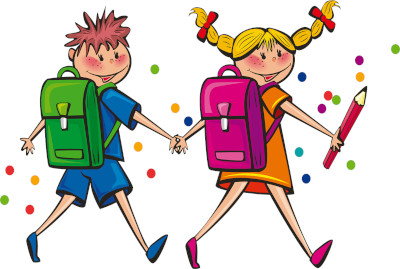There are different kinds of schools and kindergarten. In Germany for example, there are ‘Hauptschulen’, ‘Realschulen’, ‘Gymnasien’, ‘Waldorfschulen’ and ‘Gesamtschulen’. All of these are different schools that are designed to give the best possible education and support for each individual student. Over time, there have been various researches and theories about what is the best type of school and what is important in a good school. At some times it was autocracy and at other times autonomy. Some theories say that children should be lectured to and other theories say that it is best to let children figure out as much as possible for themselves. This was also said by Maria Montessori.
But first, who was Maria Montessori?
Montessori was born 1870 in Italy and died in 1952 in the Netherlands. She was the first female physician in Italy. However, she changed her focus from medicine to education.
During her time as physician, she worked with many disabled children. She was convinced, that they not only need medical assistance, but just as importantly, proper teaching practices.
A child according to Maria Montessori:
The child is a creature of God who is good by nature. It has an own identity and develops individually. The child has the inner need to actively engage with its environment. The individuality of the child is at the center of Montessori’s theory.
Polarization of attention:
We all saw children, no matter the age, playing with building blocks, different shapes that need to be put into the right holes or other puzzles. Sometimes, they sit there with their mouth open and only focused on the puzzle. It feels like there could be a loud bang next to them and they would not stop their concentration. According to Maria Montessori, this is called polarization of attention. The child is in an intense attention phase, which is not influenced by the environment. He seems to block out everything that is happening around him. Montessori calls this ‘flow’. The child keeps the concentration on one thing, until it was able to solve it. During this time, it satisfies its need to learn.
The child as a builder of himself:
One of the most popular quotes in Montessori’s theory is ‘Help me to do it myself!’. For her, the only way children can learn properly is, when they learn it by themselves. The job of the teacher is less to teach, but more to support. But we will get to the teacher in a minute.
The absorbent mind:
The absorbent mind is a phase during the first three years of a newborn. During this time, knowledge is absorbed and stored unconsciously. The kid can access the knowledge later on.
Environment:
The environment of a kid should be prepared in three different way. The time prepared environment concerns the time schedule in the school or kindergarten. Every day should have 2 to 3 hours of free working time. It should be scheduled with the silent and group working time. In addition, the environment should be prepared spatially. This includes a large area where the children can move, everything should be clearly arranged and easily accessible, the rooms and work equipment should be child-friendly and the environment should give an impression of general order and neatness. Lastly, the environment must be factually prepared. The Montessori materials should be arranged in specific shelves.
That brings us also to the next part of Maria Montessoris theory. Her Materials.
The Montessori materials isolate a single property. As an example, the colors and weights are the same, but the shape is different. All materials should be present only once and be aesthetic for a child. Last but not least, their materials are constructed in such a way that the students can control the solutions themselves.
The educator is not actively involved in the child’s development, but serves only as a support. He provides the material and explains it, he provides the prepared environment just mentioned, he is the contact person and shows noticeable interest in the child.
The theory of Maria Montessori has advantages and disadvantages.
Clearly, the focus is on the child. He or she learns independently and thus develops into an individual person. In addition, self-confidence is strengthened. The principle that three grades are taught together teaches the children tolerance and social integration.
However, some parts of the development are far from reality. The lack of competition may be good at first, but in real life there is always competition. Be it with the sibling or the work colleague. In addition, the creativity of the child comes too short.
As you can see, Maria Montessori changed the focus not only in Maria Montessori Establishments, but also in public schools. Every theory has its positive and negative aspects. I think the foundation of Montessori schools is very good, but could be improved. Currently, there are 40.000 Montessori schools and kindergarten, but I wouldn’t send my child to one of these. Would you?
https://www.studocu.com/de/document/fachhochschule-bielefeld/padagogik-der-kindheit-vertiefung/alle-theorien-pada-lk-zusammenfassungen/12585886 (2019/2020)
https://prezi.com/cyfp8mn0fzce/maria-montessori/ (Allison Edwards, 24/10/2013)
https://pixabay.com/photos/building-blocks-creative-colors-5097836/


